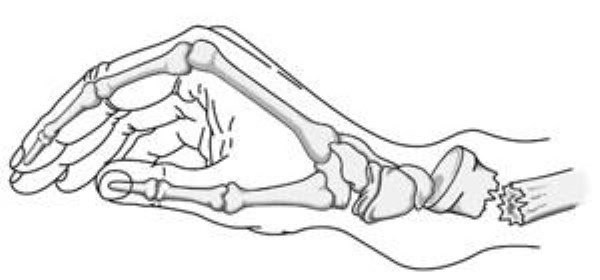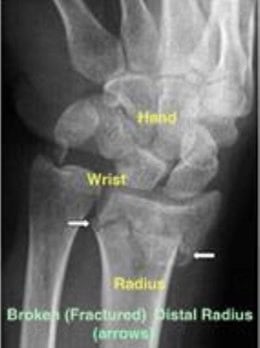What is a distal radius fracture?
A distal radius fracture is a break of the radius (one of the bones in your forearm) at the wrist.
There are 2 bones in your forearm – The radius and the ulna. When the radius is broken near the wrist, it is called a distal radius fracture.

Why is the distal radius important?
The distal radius forms part of the wrist joint. If your distal radius is broken, you likely won’t be able to move your wrist as you normally would, and movement may cause pain. You may also find yourself having difficulty carrying heavy loads on the affected side.
How does a distal radius fracture occur?
The most common reason for a distal radius fracture is falling onto an outstretched or flexed hand. This most commonly happens in older patients. Occasionally, such fractures can also result from accidents.
What are the signs and symptoms of a distal radius fracture?
Distal radius fractures typically present with pain and swelling over the wrist after a fall. The wrist may also appear different compared to the other unaffected side. Movement of the affected wrist is usually severely limited and painful. In severe cases, you may also experience numbness and tingling of the fingers.
How is a distal radius fracture diagnosed?
To diagnose a distal radius fracture, your doctor will typically interview you to find out how the injury occurred. He will then examine the wrist, before ordering some X-rays of the wrist. In severe cases, a computerised tomography (CT) scan may be necessary.

What is the treatment for a distal radius fracture?
Treatment depends on the severity and type of your fracture.
If the bone is in a good position, (i.e., there is only a small crack), non-surgical treatment can be used. A backslab will be applied. This will be changed after a week to a full plaster cast, which will be removed after 3 to 4 weeks. In suitable patients, such as younger adults with good bone quality, the bones can be realigned before a cast is placed. This will require the patient to undergo anaesthesia.
After cast removal, you will be required to undergo a course of physical therapy to regain movement of your wrist. X-rays may be scheduled throughout the recovery period to check that your fracture is healing properly inside the cast.
Surgical treatment
This is usually only needed for unstable injuries, or injuries which applying a cast cannot fix. The surgeon will cut open the skin and arrange the broken bone back together. After this is done, the fracture is held together with plates and screws. Splints are typically unnecessary after surgery.

What is the rehabilitation process like?
Firstly, physical therapy starts immediately after the surgery for the fracture – In the case of non-surgical patients, therapy will start right after cast removal.
The rehabilitation process starts with mobilisation. Mobilisation involves using exercises to ease the patient into being able to move the injured wrist again.
Once you have achieved a good range of wrist motion, you will be started on strengthening exercises. This will allow you to return to your usual daily activities. In general, patients will take up to 6 months to fully recover.
For an assessment of your condition, please book an appointment with Dr. Yong Ren.
Lorem ipsum dolor sit amet consectetur adipiscing elit ut arcu a dignissim suscipit non ac eget tellus in nisl mauris nec.
